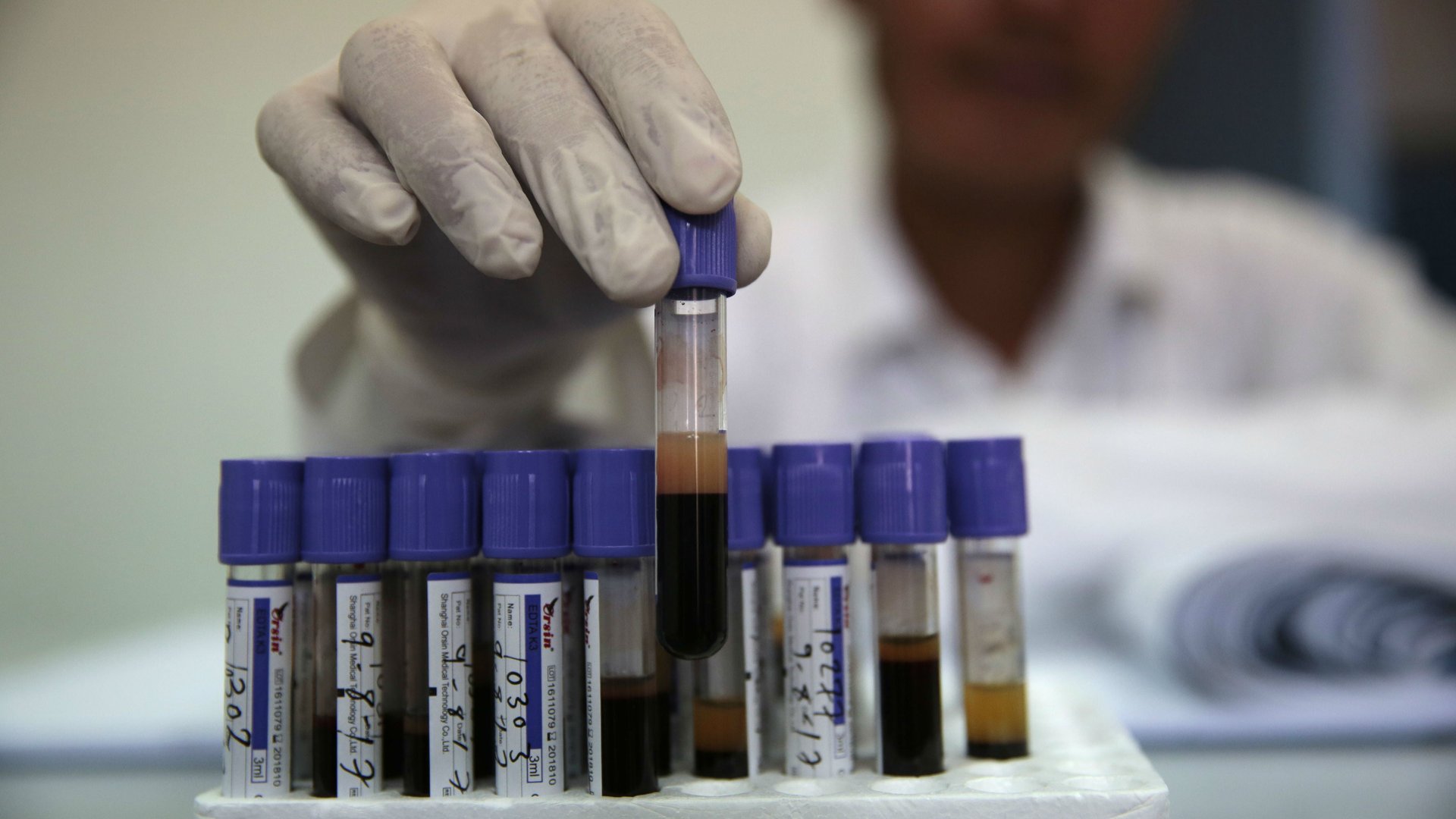Diagnosing Alzheimer’s may soon become much easier and cheaper
The big problem with Alzheimer’s is the disease begins as much as two decades before any symptoms show up, usually in a person’s 60s. There are a handful drugs that can slow the progress of memory loss that comes with Alzheimer’s, but by the time the disease is diagnosed, it’s too late: there’s already been irreversible damage done to the brain. The disease almost always progresses until it becomes fatal. Most Alzheimer’s drug trials have failed in part because it’s so difficult to find suitable populations of those who have the earliest stages of the disease.


The big problem with Alzheimer’s is the disease begins as much as two decades before any symptoms show up, usually in a person’s 60s. There are a handful drugs that can slow the progress of memory loss that comes with Alzheimer’s, but by the time the disease is diagnosed, it’s too late: there’s already been irreversible damage done to the brain. The disease almost always progresses until it becomes fatal. Most Alzheimer’s drug trials have failed in part because it’s so difficult to find suitable populations of those who have the earliest stages of the disease.
A tool to diagnose the disease when it begins—when gobs of proteins called amyloid and knots of tau start first start degrading the brain—would be huge in the field of Alzheimer’s treatment. That’s what makes a study published (paywall) today (Jan. 31) in the journal Nature so exciting: scientists working in Japan and Australia announced they’ve identified certain fragments of proteins, that, when found in the blood, mean amyloid proteins are building up in the brain.
“Blood biomarkers are a huge advancement,” says Ron Petersen, the director of Alzheimer’s research at the Mayo Clinic, who was not affiliated with the study. As recently as the late 1980s, Alzheimer’s could only be diagnosed post-mortem through autopsies of the brain (paywall). In recent years, scientists have figured out how to identify signs of Alzheimer’s using spinal taps and PET scans, but because these tests are both invasive and expensive, they’re usually only given to patients who are already showing clear signs of the disease. In other words, they’re only used on patients for whom treatment will be too little, too late. A simple blood test could be given to anyone, at any age, and catch Alzheimer’s when it starts.
The blood biomarker was discovered by researchers at the National Center for Geriatrics and Gerontology in Japan, in a study involving 400 participants. These people were either cognitively normal, had mild cognitive impairment, or had diagnosed Alzheimer’s disease.
The scientists took blood samples, and catalogued the hundreds of fragments of “amyloid precursor proteins” they found in each sample. After comparing levels of these protein fragments to levels of amyloid in the brain found with PET scans, the scientists found that certain pairings were 90% accurate at predicting whether or not there was amyloid buildup in the brain.
There’s still a long way to go before this kind of test can be used in a clinical setting. The challenge will be reproducing the data on a larger scale, Petersen says. This trial included about 400 individuals, but they all either were referred to the study or responded to an advertisement; in other words, not representative of a general population. It’s also not the first discovery of a potential blood biomarker for Alzheimer’s; researchers at Washington University in Saint Louis are developing methods to diagnose the illness using amyloid protein fragments and tau biomarkers (paywall).
In an email to Quartz, Katsuhiko Yanagisawa, the director of the National Center for Geriatrics and Gerontology and lead author of the study, said his team plans to conduct larger follow-up research in an academic setting. He added that they also are looking to partner with manufacturers to make a test that could be distributed to labs.
Even if these proteins don’t turn out to be good enough to use as a definitive test for Alzheimer’s, they still could be used to improve the way we diagnose the illness. If a blood test was good enough to indicate a higher chance of abnormal amyloid buildups in the brain, it could help doctors better know which patients should undergo a PET scan or spinal tap to confirm an Alzheimer’s diagnosis.